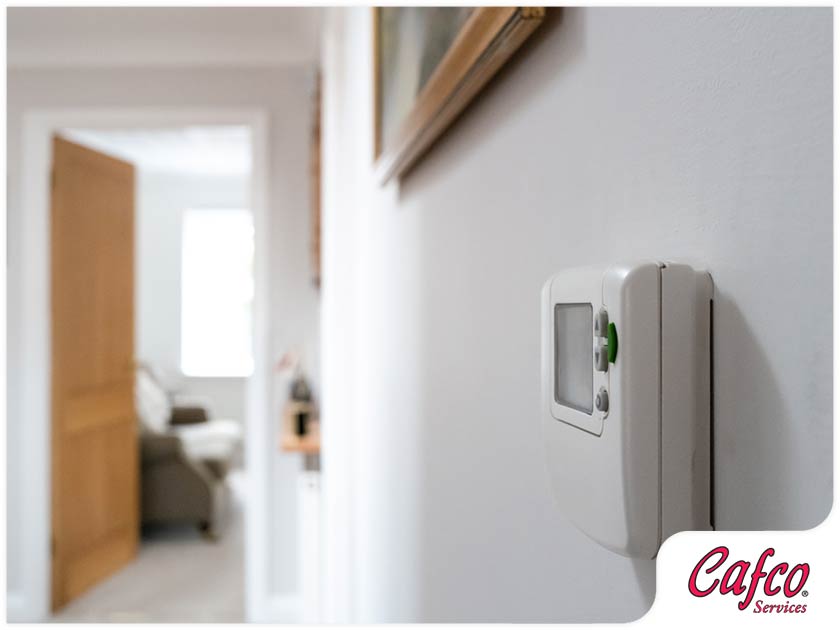The thermostat plays a significant role in the efficiency of your heating and cooling system. It detects the temperature of your living space and decides if it is necessary to turn on the air conditioner or heater. For instance, if your home is too hot, it will run your AC to reach your desired temperature. If you have been finding it hard to keep your rooms comfortable, there could be an issue with your thermostat, and you need the help of an HVAC repair technician.

Moreover, it matters where you install your thermostat. Keep reading to discover the best locations for this device.
Why Is Your Thermostat Important?
You can think of your thermostat as the control center of your HVAC system. Regardless of how efficient and well-maintained your equipment is, it will not operate smoothly if your thermostat is not working properly. Sometimes, this device is the culprit behind heating and cooling concerns.
To ensure your thermostat is functioning correctly, pay attention to temperature readings and observe how your HVAC system runs. The thermostat could be the issue if your unit keeps cycling on and off or can’t meet your heating and cooling demands. However, it does not necessarily mean that the device is malfunctioning. It could just need new batteries or a system upgrade. Sometimes, a change of thermostat location is all your heating and cooling equipment needs to keep your living space cozy.
Where to Install It
Busiest Part of Your Home
What is the most frequently used part of your home? Comfort should be prioritized in this area, making it a great location for your thermostat. This placement will result in more accurate readings and improved HVAC performance. To ensure the room stays at your preferred temperature, do not place your thermostat near large windows or spots that receive plenty of sunlight.
The Middle of Your Living Space
Experienced HVAC installation companies usually recommend installing the thermostat in the center of your home. It represents your living space’s climate the best. Placing the thermostat in the middle of your home can help improve its accuracy.
First Floor
Do you own a multi-story home? If so, you want your thermostat to be on the first floor. The upper areas of your house are typically warmer. When installed on the second or third floor, your thermostat might read that your home is warming up when it is not. Besides placing your thermostat in the central area of your living space, it will help to invest in a dual-zone thermostat.
Interior Wall
Unlike exterior walls, outdoor temperature changes do not influence interior walls. They are a better representation of your typical home temperature. These are just some of the many reasons HVAC installation companies suggest this location for thermostats.
Where You Should Not Install It
Your Kitchen
One of the warmest parts of your home is the kitchen. Aside from all the cooking, it houses several heat-generating appliances, such as refrigerators, dishwashers, and even televisions. If your thermostat is in this room, it may not produce correct readings. It can cause your AC to run even when it is not necessary. During the colder months, you might find it harder to heat your rooms because your thermostat is detecting your kitchen’s warm temperature.
Far From Your Wi-Fi Router
A smart thermostat makes it more convenient to control your heating and cooling system. You can set a schedule for your equipment to operate according to your house’s occupancy. It means you can have your HVAC system run less when you are away or at work and more once you are at home. As a result, you enjoy more savings on your energy costs. You can even control a smart thermostat using your phone, tablet, or computer.
If you have or are getting a smart thermostat, make sure it is not too far from your WiFi router. The internet must be strong enough to keep your device connected. At Cafco Services, we can help you choose and install the ideal thermostat for your home. We also offer superior HVAC repair and installation services.
Near Windows and Doors
Plenty of sunlight and drafts could get through windows and doors, which could cause conflicts with your thermostat’s readings. Installing your thermostat in the warmest or coldest rooms in your home could cause your thermostat to sense that your living space is hotter or colder than its actual temperature. When this happens your HVAC system will cycle on and off, compromising your comfort, raising energy costs, and increasing the likelihood of early system failure.
Near Vents
Vents could harm your thermostat’s accuracy. Avoid placing it above or below vents to avoid incorrect temperature readings. Vents will blow hot or cold air directly into your thermostat. When this happens, your HVAC system will stop cycling even before reaching your desired temperature. It also causes your equipment to work harder than it should, straining its components.
Contact a technician immediately if you suspect something is wrong with your HVAC. As one of the area’s leading heating and air conditioner maintenance companies, you can count on us for your HVAC needs.
Hallways
Your thermostat does not belong in the hallways. These spaces are long and narrow and barely receive any air circulation. It means the device will fail to generate correct temperature readings. Moreover, you do not spend a lot of time in this area, and it usually stays vacant.
Exterior Walls
Another spot you should avoid for your thermostat is exterior walls. They are easily affected by the temperature outdoors, especially if they do not have sufficient insulation. This is why it is better to place your device on interior walls.
Whether you need a new AC for your home or equipment to protect your food and perishables, Cafco Services has quality options for you. Our team has been providing quality residential and commercial HVAC services for more than seven decades. We are one of the area’s leading heating and air conditioner maintenance companies. Call us at (513) 242-3400 or fill out our contact form to schedule an appointment.
